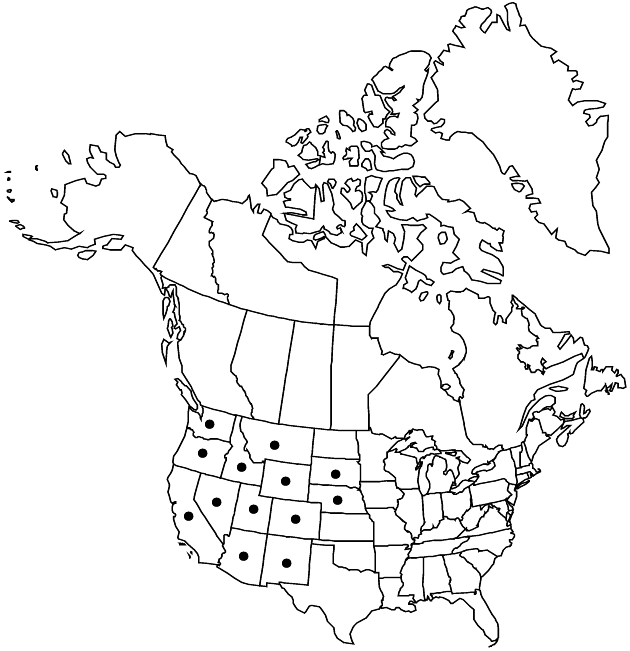Chrysothamnus viscidiflorus subsp. viscidiflorus
Plants 50–120 cm. Stems glabrous. Leaf-blades (spreading to deflexed) green to bluish or yellowish green, linear to lanceolate, 10–75 × 1–10 mm, usually twisted, flat to sulcate, margins often scabro-ciliate, apices acute, often apiculate, faces glabrous. Heads in congested cymiform arrays. Involucres obconic to narrowly cylindric, 5.5–7 mm. Phyllaries 12–18 in (2–) 3 (–4) series, in weak vertical ranks, subapical green patches often present, midnerves obscure to evident distally or throughout, usually keeled, lanceolate to elliptic, unequal, margins scarious, eciliate or ciliolate, apices slightly thickened distally, faces glabrous. Disc-florets 4–14; corollas 5–6.5 mm, lobes 1–1.5 mm. 2n = 18, 27, 36, 45, 54.
Phenology: Flowering summer–fall.
Habitat: Alpine taluses
Elevation: 900–4000 m
Distribution

Ariz., Calif., Colo., Idaho, Mont., Nebr., Nev., N.Mex., Oreg., S.Dak., Utah, Wash., Wyo.
Discussion
Diploids of subsp. viscidiflorus with relatively fewer florets per head and narrower involucres have been called var. stenophyllus (L. C. Anderson 1980).
Selected References
None.